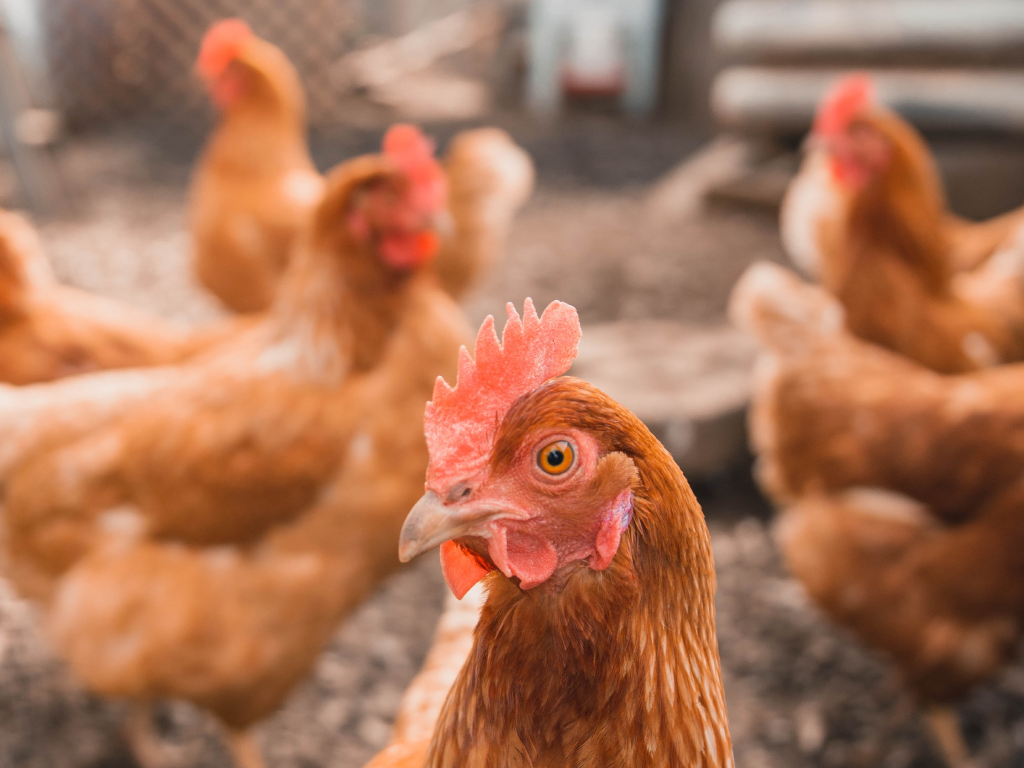


If you had the chance to grow up on a farm in Alberta, you were one of the lucky ones. Most of us don’t get to see where our food comes from and how much work goes into producing fresh, nutritional fuel for our bodies. Thanks to the distance between the farm and our local grocery stores and markets, it’s hard to know what exactly goes on behind closed barn doors.
According to Agriculture and Agri-Food Canada’s 2020 poultry production report, nearly 6.5 million chickens were produced in Alberta in the month of January alone. That figure is growing steadily. Their estimates suggest that the market for chickens and hens in Canada nearly tripled between 1990 and 2018.
But not all chickens are equal. The word “chicken” is a general word to describe various breeds of birds, which all have different roles in our food production system. So, it’s not surprising that both conventional and organic farmers in Alberta are often asked, “What’s the difference between laying hens and broiler hens, anyway?”
The short answer: Laying hens are adult female chickens that lay the eggs we find near the dairy section of the grocery store. Meanwhile, broiler chickens can be male or female, and are raised for their meat.
Breed
Just like distinct dog breeds have different characteristics and abilities, chickens and hens come in many forms. “Meat chickens” (broilers) are typically larger breeds with more muscle content, chosen because they grow very large, very quickly. Although they also lay eggs, broiler hens lay them much less often than laying hen breeds.
Laying hens (“layers”) are leaner and smaller. They’re well-suited for laying eggs on a regular basis. In fact, at their peak, they can lay one egg every single day.
But it’s not always completely black-and-white on Canadian chicken farms. Some chickens are known as dual purpose chickens. These multi-taskers are used for both laying eggs and, at the end of their lives, for meat. However, many farmers find that older hens produce tough or stringy meat of a lower quality and produce fewer eggs, so these types of birds aren’t as common in commercial farming operations.
Lifespan
A broiler chicken can grow to full size in just six to eight weeks. At that point, they’re typically sent for slaughter, since their primary purpose is to be used for meat.
Meanwhile, laying hens are leaner and grow slower than broiler hens. They’re able to produce eggs regularly for about a year. After that, they’re typically sent to slaughter, although their natural lifespan can be up to a decade.
Why did the chicken cross the road?
Because it was free-range? Or is it free-run? Cage-free? Maybe it’s organic…
All these terms can get confusing when you’re standing in front of the egg cartons at the grocery store. You can learn more about the different labels using the Chicken Farmers of Canada’s “Wheel of Chicken” infographic.
In Canada, all chicken farmers follow guidelines to ensure the humane treatment of animals. The National Farm Animal Care Council has developed codes of practice for different types of poultry, including one for chickens, turkeys, and breeders, as well as one for pullets and laying hens (pullets are young laying hens that have not started laying eggs yet). These contain both binding regulations about how poultry is raised, as well as recommended best practices.
In Canada, all broiler chickens are raised in large barns where they’re free to move around, but often with limited or no access to the outdoors. Laying hens are typically housed in closer quarters, often in cages.
Organic Standards
Farmers who choose to raise chickens organically have some very specific rules to follow. The Canadian Organic Standards provide living and care requirements for chickens, including:
Although these rules are requirements for organic chicken farmers, there are some conventional farms that use many of the same practices. You can find a useful animal welfare standards comparison chart on the BC SPCA website, which shows the different levels of regulation side-by-side.
Now that you know more about chicken farming in Alberta (and across Canada), you can make informed choices about what you want in your cart at the grocery store. Remember, all Canadian chickens are steroid and hormone-free, and raised to be nutritious and delicious!
Do you want to learn more about what organically-grown means in Alberta? Would you value monthly updates on Alberta’s local organic sector – including legislation, farming practices, genetically modified organism (GMO) regulation, and more? Now you can receive it the way you want to:



Disclaimer: Opinions expressed in this document are those of the author and not necessarily those of the Governments of Canada and of Alberta. The Government of Canada, the Alberta Ministry of Agriculture and Forestry, and its directors, agents, employees, or contractors will not be liable for any claims, damages, or losses of any kind whatsoever arising out of the use of, or reliance upon, this information.
![]() More Get the Facts
More Get the Facts
Apr 9 | Get the Facts
This article was written prior to the tragic passing of Cathy Halonen, and is being published in remembrance of her. Her passion and dedication to o
Read MoreMar 30 | Get the Facts
Walking through grocery stores, you’ve seen food with marketing phrases like “all-natural," “sustainably grown," “pasture raised," “hormon
Read MoreJan 14 | Get the Facts
There’s no doubt about it: antibiotics are life-saving medications that play an important role in the lives of humans and animals alike. They’
Read More